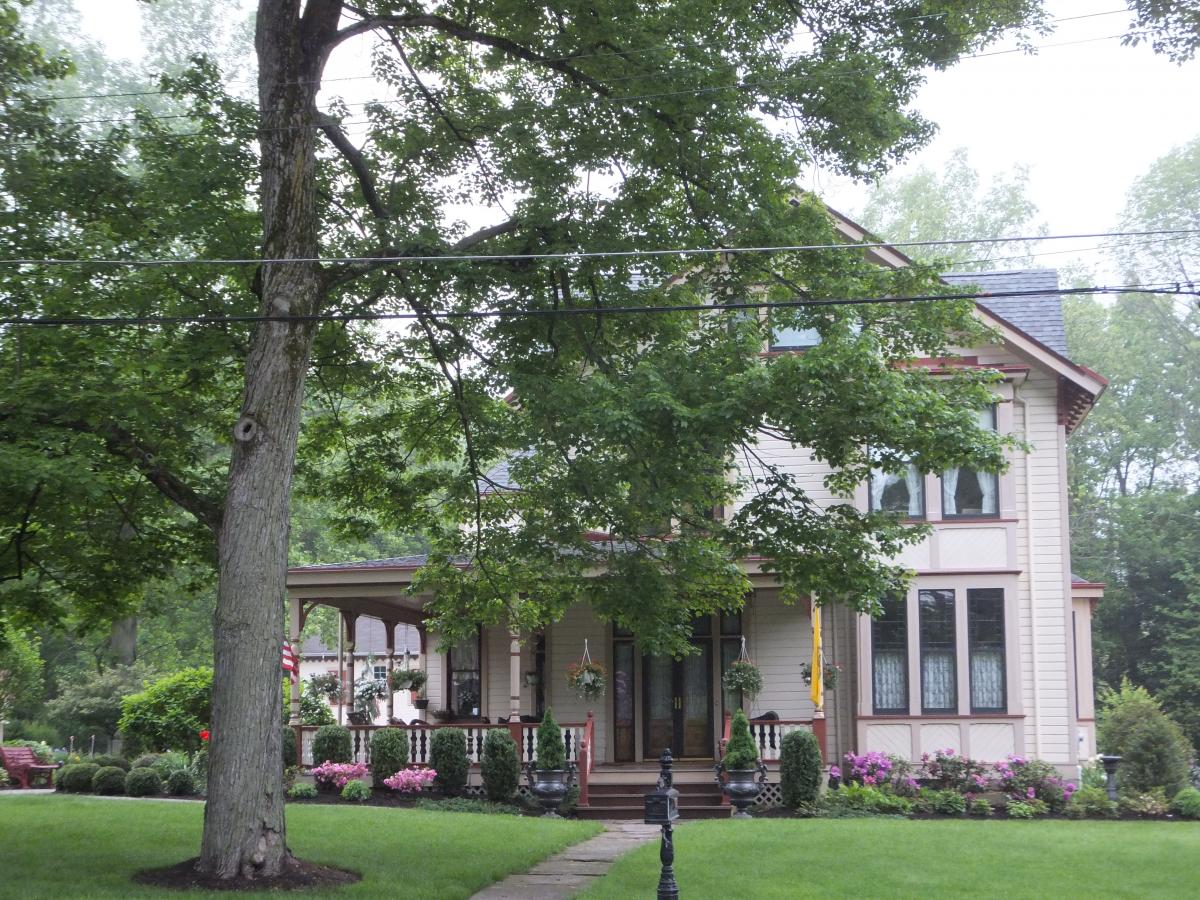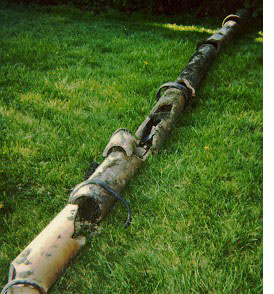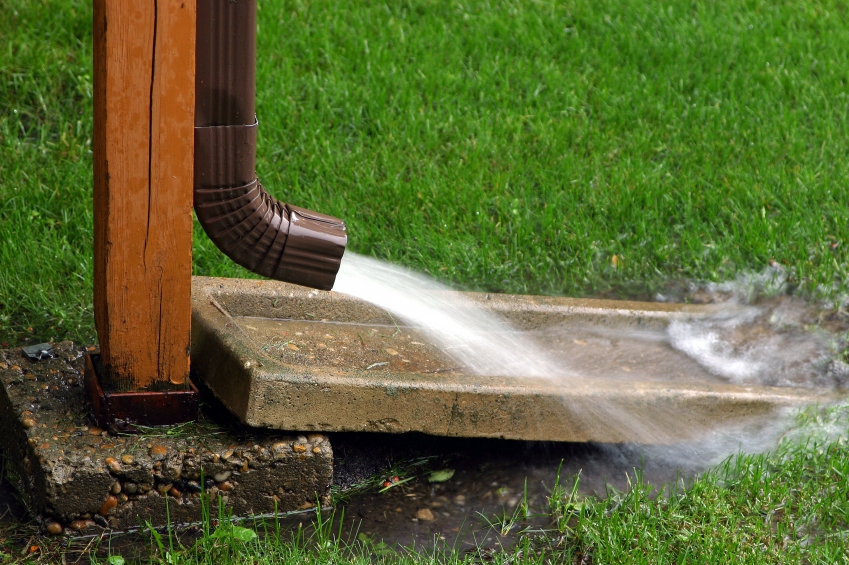Homeowner's Role
 Homeowners play a key role helping to solve the sewage overflow issue. It is the homeowner's responsibility to fix any improper connections to the sanitary sewer line such as downspouts, driveway drains and groundwater sump pumps.
Homeowners play a key role helping to solve the sewage overflow issue. It is the homeowner's responsibility to fix any improper connections to the sanitary sewer line such as downspouts, driveway drains and groundwater sump pumps.
Homeowners must also maintain and/or repair their house lateral.
In some communities, the homeowner is responsible for the portion of the lateral extending from the home to the property line (right of way) and the municipality is responsible for the remaining portion that runs from the property line to the main sewer connection in the street. In other communities, homeowners are responsible for the entire length of the lateral from the home to the main sewer line connection in the street. You should check with your local community before doing significant maintenance on your sewer lateral to determine your responsibility.
 House laterals often can become deteriorated due to age or settling as well as clogged with tree roots. It's important for homeowners to have their lateral checked for leaks that can allow groundwater to seep into the system or for clogged areas that can slow the flow of wastewater from your home, or cause a back-up of sewage into your basement.
House laterals often can become deteriorated due to age or settling as well as clogged with tree roots. It's important for homeowners to have their lateral checked for leaks that can allow groundwater to seep into the system or for clogged areas that can slow the flow of wastewater from your home, or cause a back-up of sewage into your basement.
If an improper connection is detected, the homeowner must disconnect the problem area and drain the stormwater onto the ground, into a drainage ditch, into the storm sewer line or into a green infrastructure solution, such as a rain barrel or rain garden. It is recommended that you contact a licensed plumber to correct the problem.
Additional Ways the Homeowner can Help
Protecting our waterways is the responsibility of all individuals. In addition to disconnecting improper connections to the sewer system, it is also important to remember that:
- Fixing the regional sewer overflow problem potentially could cost billions of dollars and it will require your support. You can expect to pay higher sewage rates over the coming years as municipalities work to comply with an EPA administrative consent order to begin fixing the problem.
- Conserving water is one way to lower your overall utility bill as well as to help reduce the flow being transported to the sewer treatment facility. Some ways to conserve water in your home include:
- Install low-flow toilets, which use less water for flushing or place a brick or sand-filled plastic bottle in your toilet tank to decrease the water used per flush
- Take shorter showers and/or install a low-flow showerhead.
- Turn water off when shaving, brushing your teeth and washing your hands. Only turn it back on when needed.
- When using a dishwasher, run only full loads and use shorter cycles when possible. If hand washing, rinse sparingly or fill a second sink basin for rinsing.
- Wash full loads of laundry whenever possible or use a lower water volume setting for small loads.
- Remember that chemicals you use in your lawn and garden affect our rivers and streams as well. When it rains, pesticides and other chemicals will be washed into the stormwater system and deposited directly into our rivers. If necessary, use only toxic-free home and garden products.
- Wash your car at a commercial self-car wash that recycles wash water. If you do wash your car at home, wash it on the lawn to keep soapy water from flowing into the storm drain. Don't leave the hose running continuously.
- Water your lawn and garden in the morning when less water is lost to evaporation, and limit it to one hour a week (Healthy grass only needs about 1 inch of water a week.). Keep the grass cut at about 2.5-3 inches so it doesn't dry out as quickly.
 Redirect your downspouts so that the rain soaks into your yard or garden, rather than running down the driveway or into the street.
Redirect your downspouts so that the rain soaks into your yard or garden, rather than running down the driveway or into the street.- Consider installing a rain barrel to help capture and store rainwater that can be used on your lawn and garden. Rain barrels are a basic green infrastructure tool for homeowners.
- Plant trees and other vegetation to help reduce stormwater run-off by allowing rainwater to soak into the ground.

Homeowners play a key role helping to solve the sewage overflow issue. It is the homeowner's responsibility to fix any improper connections to the sanitary sewer line such as downspouts, driveway drains and groundwater sump pumps.
 House laterals often can become deteriorated due to age or settling as well as clogged with tree roots. It's important for homeowners to have their lateral checked for leaks that can allow groundwater to seep into the system or for clogged areas that can slow the flow of wastewater from your home, or cause a back-up of sewage into your basement.
House laterals often can become deteriorated due to age or settling as well as clogged with tree roots. It's important for homeowners to have their lateral checked for leaks that can allow groundwater to seep into the system or for clogged areas that can slow the flow of wastewater from your home, or cause a back-up of sewage into your basement. Redirect your downspouts so that the rain soaks into your yard or garden, rather than running down the driveway or into the street.
Redirect your downspouts so that the rain soaks into your yard or garden, rather than running down the driveway or into the street.